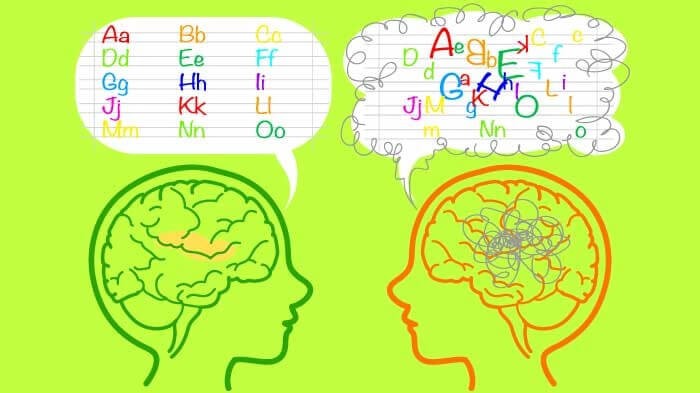Navigating the complexities of learning can be challenging. If you or someone you know is facing persistent difficulties in reading, writing, math, or other areas of learning, you might be wondering if a learning disorder could be a factor. An online Learning Disorder Test can be a valuable initial step in understanding these challenges. This article will explore what a learning disorder test is, the different types of learning disorders, and why seeking professional evaluation is crucial.
What is a Learning Disability Test?
A learning disability test, often available online as a self-assessment quiz, is designed to identify potential signs and symptoms associated with learning disorders. It typically consists of a series of questions related to various aspects of learning, such as reading comprehension, writing skills, mathematical abilities, and organizational skills.
It’s important to understand that these online tests are not diagnostic tools. They serve as screening instruments to help individuals recognize patterns of difficulties that may warrant further investigation by qualified professionals. Think of it as a preliminary check – a way to become more aware of potential learning differences and whether seeking expert advice is the next appropriate step.
The questions in a learning disorder test are designed to touch upon common indicators. For example, you might encounter questions like:
- “Do you find reading significantly slower or more challenging than your peers?”
- “Is writing a laborious task, and do you struggle with spelling or grammar?”
- “Do mathematical concepts and problem-solving feel unusually difficult?”
- “Do you often struggle with organization, time management, or following instructions?”
Answering these questions honestly can provide valuable insights into areas where learning might be more challenging. If you answer “yes” to several questions, especially consistently across different areas, it may be beneficial to explore further.
Types of Learning Disorders
Learning disorders are neurological conditions that affect the way a person processes information. They are not indicative of low intelligence; in fact, many individuals with learning disorders are highly intelligent. These disorders simply mean that there is a difference in how the brain learns and processes specific types of information. Here are four primary types of learning disorders:
1. Dyslexia (Reading Disorder)
Dyslexia is perhaps the most well-known learning disorder, primarily affecting reading. Individuals with dyslexia often struggle with:
- Phonological awareness: Difficulty recognizing and manipulating sounds in spoken language.
- Decoding: Challenges sounding out words and connecting letters to sounds.
- Reading fluency: Slow and labored reading, even with familiar words.
- Reading comprehension: Difficulty understanding the meaning of written text, despite being able to read the words.
Dyslexia is not just about reversing letters. It’s a complex language-based learning disability that can impact various aspects of reading and language processing. For more in-depth information, resources like the International Dyslexia Association (IDA) (https://dyslexiaida.org/) offer comprehensive support and understanding.
2. Dyscalculia (Mathematics Disorder)
Dyscalculia is a learning disorder that affects mathematical abilities. It’s not just about disliking math; it’s a genuine difficulty in processing numerical information. People with dyscalculia may struggle with:
- Number sense: Understanding the concept of numbers and their relationships.
- Math facts: Memorizing basic arithmetic facts (addition, subtraction, multiplication, division).
- Mathematical operations: Performing calculations and following mathematical procedures.
- Problem-solving: Applying mathematical concepts to solve word problems.
Dyscalculia can impact everyday life, from managing finances to telling time. Organizations like Understood.org (https://www.understood.org/) provide resources and support for individuals with dyscalculia and their families.
3. Dysgraphia (Writing Disorder)
Dysgraphia is a learning disorder that affects writing abilities. It’s more than just messy handwriting. Individuals with dysgraphia may experience challenges with:
- Handwriting: Difficulty forming letters, spacing words, and writing legibly.
- Spelling: Frequent spelling errors, even with common words.
- Grammar and punctuation: Errors in sentence structure, grammar, and punctuation.
- Written expression: Organizing thoughts and ideas in writing, and expressing themselves clearly on paper.
Dysgraphia can make writing a slow, laborious, and frustrating process. Occupational therapy and specialized writing instruction can be beneficial.
4. Dyspraxia (Motor Coordination Disorder)
Dyspraxia, also known as Developmental Coordination Disorder (DCD), affects motor coordination and planning. While not strictly a learning disability in the academic sense, it can significantly impact learning and daily life. Individuals with dyspraxia may have difficulties with:
- Gross motor skills: Coordination of large muscle movements, such as running, jumping, and balance.
- Fine motor skills: Coordination of small muscle movements, such as writing, buttoning clothes, and using utensils.
- Motor planning: Sequencing and executing movements, following instructions, and organizing tasks.
- Spatial awareness: Understanding spatial relationships and navigating their environment.
Dyspraxia can affect various aspects of learning, from participating in physical activities to performing everyday tasks. Early intervention and occupational therapy are often helpful.
 Child with learning difficulties
Child with learning difficulties
Specific Learning Difficulty: Beyond the Myths
It’s crucial to understand what a learning disorder is not. It’s not:
- A visual or auditory impairment: Learning disorders are not caused by problems with seeing or hearing. While these impairments can coexist, learning disorders are distinct neurological conditions.
- A sign of low intelligence: As mentioned earlier, learning disorders do not reflect a person’s intellectual capacity. Individuals with learning disorders come from all ranges of intelligence.
- Simply a lack of effort or motivation: Learning disorders are not due to laziness or lack of trying. They are genuine difficulties in processing information, requiring specific strategies and support.
- Caused by cultural or economic disadvantage: While socioeconomic factors can impact educational opportunities, learning disorders are neurobiological and exist across all backgrounds.
Sometimes, learning disabilities are referred to as “hidden disabilities” or even, in a more positive light, connected to the idea of “genius.” This is because individuals with learning disorders often have unique strengths and talents in other areas. It’s important to focus on both the challenges and the strengths, providing appropriate support to help individuals thrive.
Seeking Professional Evaluation and Support
While an online learning disorder test can be a helpful starting point, it is essential to seek a comprehensive evaluation from qualified professionals for a proper diagnosis. This evaluation may involve:
- Educational psychologists: Specialists in learning and development who can conduct thorough assessments of academic skills and cognitive processing.
- Neuropsychologists: Professionals who assess brain-behavior relationships and can identify specific cognitive strengths and weaknesses.
- Speech-language pathologists: Professionals who specialize in communication disorders, including language-based learning disabilities like dyslexia.
- Occupational therapists: Professionals who can assess and address motor coordination and sensory processing difficulties, relevant to dysgraphia and dyspraxia.
A professional evaluation will go beyond a simple questionnaire. It will involve standardized tests, observations, and interviews to gain a complete understanding of an individual’s learning profile. Based on this evaluation, professionals can provide:
- Accurate diagnosis: Identifying the specific learning disorder(s) present.
- Individualized education plans (IEPs) or 504 plans: Developing tailored support and accommodations in educational settings.
- Recommendations for interventions: Suggesting specific strategies, therapies, and tools to address learning challenges.
- Emotional support: Providing guidance and resources to cope with the emotional impact of learning disorders.
FAQ: Understanding Learning Disorders
Is ADHD a Learning Disability?
No, ADHD (Attention-Deficit/Hyperactivity Disorder) is not considered a learning disability in itself. However, ADHD can significantly impact learning, and it frequently co-occurs with learning disabilities. Difficulties with attention, focus, and impulsivity in ADHD can make learning challenging.
Is Autism a Learning Disability?
Autism Spectrum Disorder (ASD) is also not classified as a learning disability. However, like ADHD, autism can affect learning. Individuals with autism may have unique learning styles and strengths, but also face challenges in communication, social interaction, and sensory processing that can impact their educational experience. Learning disabilities can and do co-occur in individuals with autism.
Is ADD a Learning Disability?
ADD (Attention Deficit Disorder) is an older term for ADHD, primarily the inattentive presentation. Like ADHD, ADD is not a learning disability but can significantly impact learning and may co-occur with learning disabilities.
Is Dyslexia a Learning Disability?
Yes, dyslexia is a specific learning disability in reading. It is one of the most common learning disabilities.
Is Anxiety a Learning Disability?
Anxiety is not a learning disability. However, anxiety and learning disabilities are often interconnected. Experiencing learning difficulties can lead to anxiety, and anxiety can also exacerbate learning challenges. It’s important to address both learning and emotional well-being.
Are Learning Disabilities Genetic?
Yes, research suggests a genetic component to learning disabilities. They can run in families, indicating a hereditary predisposition.
How Do I Know If I Have a Learning Disability?
Taking an online learning disability test is a starting point. If you recognize several symptoms and have ongoing learning difficulties, seeking a professional evaluation is the best way to determine if you have a learning disability.
What Is a Learning Difficulty?
“Learning difficulty” is often used interchangeably with “learning disability.” Both terms refer to challenges in specific areas of learning, such as reading, writing, or math.
How to Test for Learning Disabilities?
Online tests can be initial screening tools. However, formal diagnosis requires comprehensive assessment by qualified professionals like educational psychologists or neuropsychologists.
How to Diagnose a Learning Disability in Adults?
The diagnostic process for adults is similar to that for children, involving comprehensive evaluations by professionals. Adult learning disability tests online can be a starting point for self-reflection and awareness.
What Are 5 Early Warning Signs of Learning Disabilities?
While signs can vary, some common early warning signs include:
- Difficulties with reading and spelling.
- Challenges with math concepts and calculations.
- Slow or labored writing.
- Memory difficulties, especially with short-term memory.
- Trouble following directions or organizing tasks.
What Are the 4 Major Types of Learning Disabilities?
The four major types are:
- Dyslexia (Reading)
- Dyscalculia (Mathematics)
- Dysgraphia (Writing)
- Dyspraxia (Motor Coordination)
What Is the Most Common Learning Disability?
Dyslexia is considered the most prevalent learning disability.
Conclusion: Empowering Learners Through Understanding
Learning disorders are real, and they can present significant challenges. However, with early identification, appropriate support, and individualized strategies, individuals with learning disorders can thrive and reach their full potential. Taking a learning disorder test online can be a positive first step towards understanding yourself or a loved one better. Remember to follow up with professional evaluation for accurate diagnosis and access to the resources and support needed to navigate learning differences successfully.

